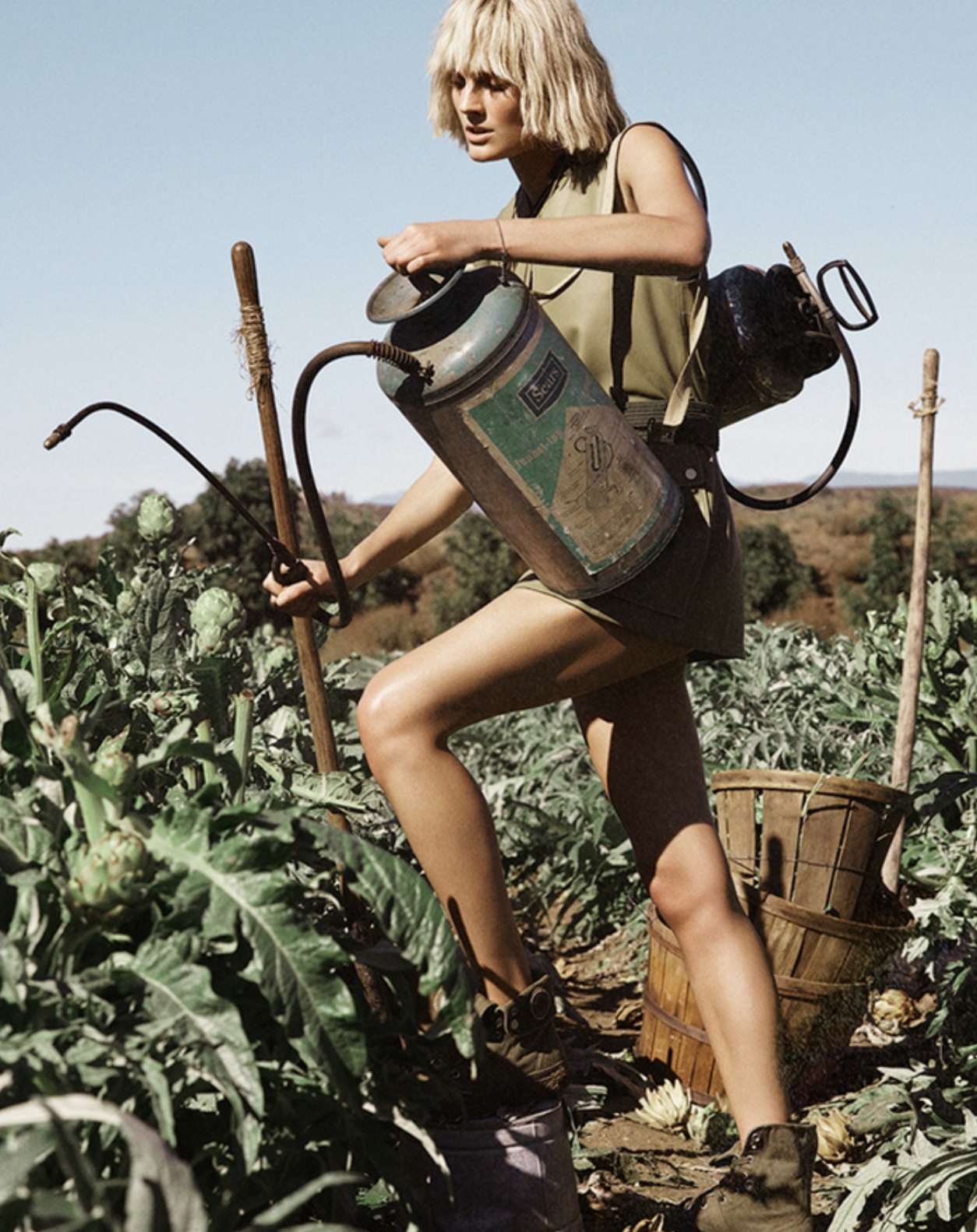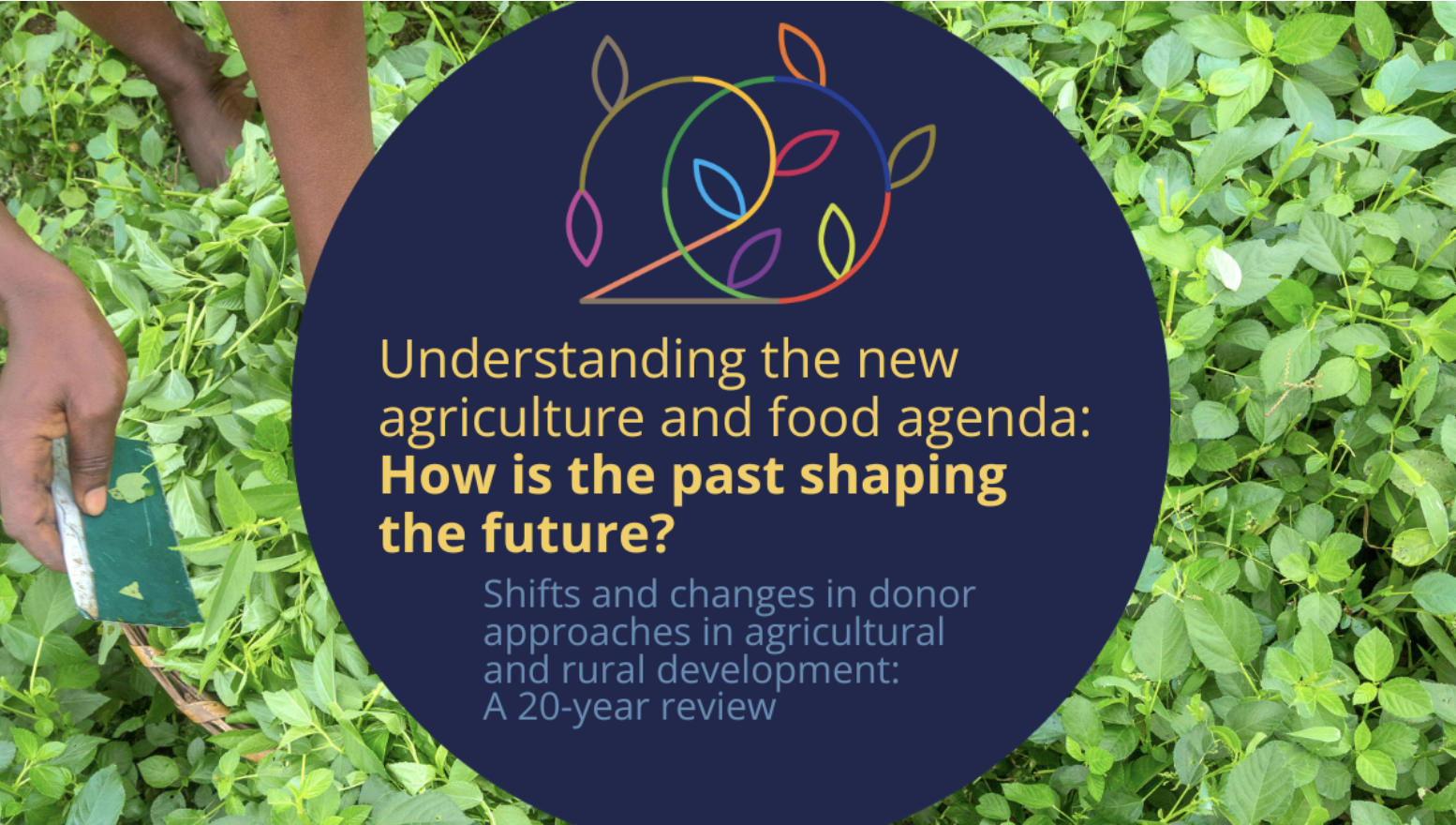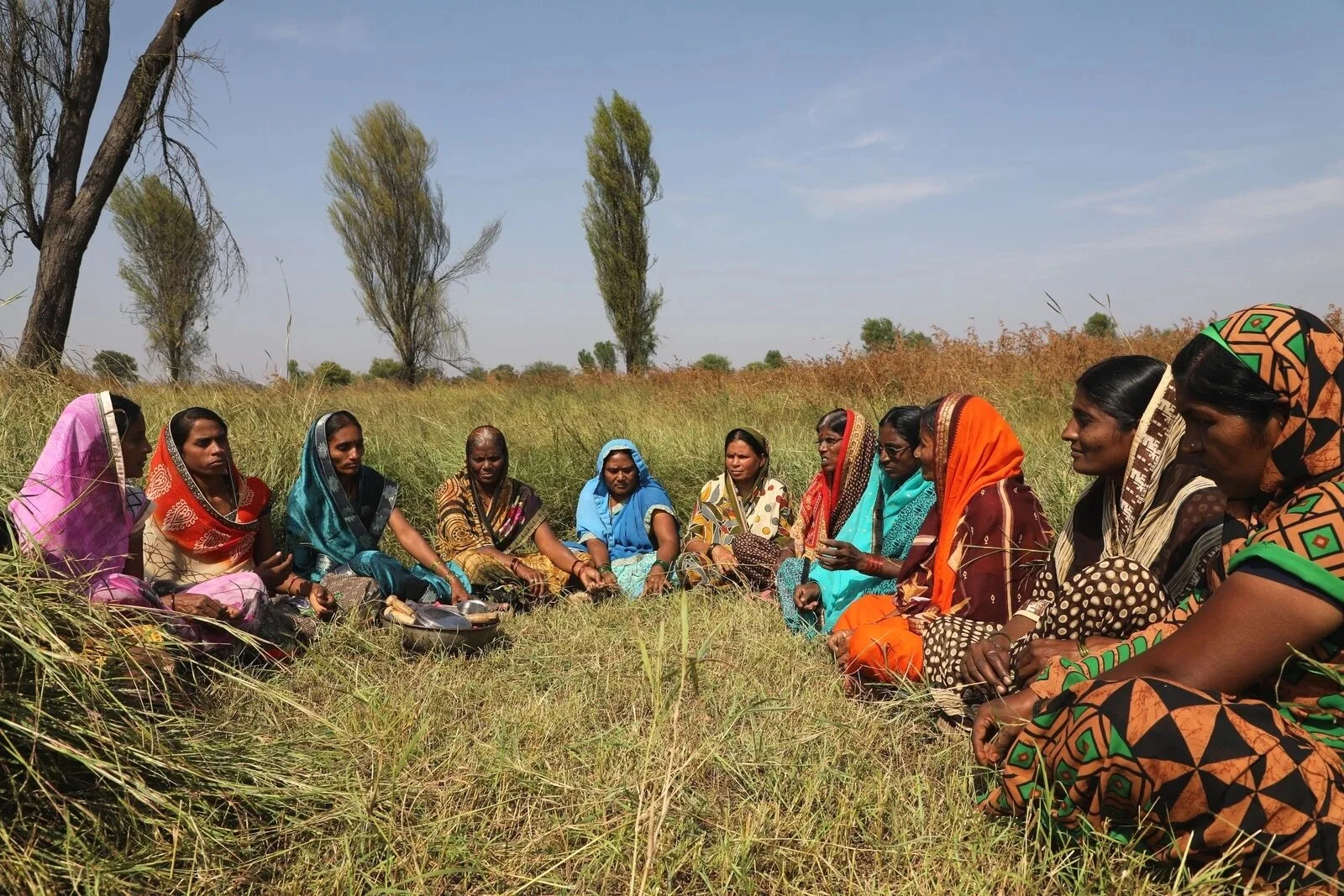2015 Fashion Story Uncovers 2026 As International Year of the Woman Farmer
/Karl Templer Styles 'Commune', Lensed By Mikael Jansson For Interview US February 2015 AOC Renewed Fashion & Style [Thru 2019]
In this 2015 fashion story ‘Commune’ lensed by Mikael Jansson for Interview and renewed March 25, AOC’s sassy side wrote:
In developing countries the women are often in charge of agriculture until the tractors arrive. Then men hop on board.
Fast forward nine years, and we wonder if anything has changed.
2026 Is International Year of the Woman Farmer
In the most recent survey of farmers in America, there were 1.89 million U.S. farms in 2023, down 7 percent from the 2.04 million found in the 2017 Census of Agriculture.
More than half of all American farms, 56%, had a female producer, while 9% of farms were run entirely by women. These female-operated farms accounted for 38% of U.S. agriculture sales and 43% of U.S. farmland, based on 2017 data and reported by the USDA. 41% of all beginning farmers across the agriculture sector are women.
There are no flags waving for women farmers in America, India, Kenya, Brazil, Sri Lanka or any other country in the world.
Thursday, May 2, 2024 in the presence of U.S. Ambassador to the United Nations Linda Thomas-Greenfield and U.S. Department of Agriculture Deputy Secretary Xochitl Torres Small, the UN General Assembly declared 2026 as the International Year of the Woman Farmer. The resolution, and the U.S. government’s efforts to generate support for it, were spearheaded by USDA and garnered more than 100 co-sponsors, underscoring the global importance of uplifting women throughout the agriculture sector.
Women Farmers in Developing Countries: Clarifying Africa’s Statistics
In developing countries, agriculture plays a far more significant role in national economies. With few — if any — national data exceptions, women play an even greater role in farming than in 2015. These women are extensively involved in various aspects of agricultural activities, from planting and weeding to harvesting and selling the produce.
According to the UN’s Food and Agriculture Organization, global agricultural output and food security worldwide could increase by 20-30% if women had access to land, technology and financial services in rural areas.
AOC has no expertise in writing about the world’s farmers. But we do caution the accuracy of the general claim that women in developing countries generally comprise about 60-66% percent of farmers across the world. All key institutions agree that India is operating at this high level of contribution.
In 2015, the World Bank issued a clarification on women farmers in Africa, recognizing this common assertion about women farmers and rejecting it across the continent of Africa.
The World Bank cited individual labor input data from Ethiopia, Malawi, Niger, Nigeria, Tanzania, and Uganda that puts the female share of labor in crop production across these countries at 40%.
The share of women farmers varies across African countries, from a lower contribution of 24% in Niger to 56% in Uganda. Across Africa, however, the share of women farmers does not approach India’s well-established share of 60-66%, with institutions leaning towards the higher number.
In more current data, AFEX, an organization headquartered in Nigeria, operating since 2014 to develop business around farm products commodities for export, issued a report in 2023 that about 80% percent of Africa’s food is produced by small-scale farmers and women account for 43% of this workforce. The report continued:
In Sub-Saharan Africa, only 15% of landholders are women and they receive less than 10% of credit and 7% of extension services compared to their male counterparts, a report by FAO revealed. For instance, in Nigeria, women farmers own a smaller share of farmland than men and can’t access credit without consent from their husbands.
A Specific Look at India’s Women Farmers: An Arduous Life Made More Difficult
In a World Economic Forum report issued in March 2023, we learn that across India, women farmers comprise 65% of the total agricultural workforce.
Despite their significant contributions, women often face numerous challenges in the agricultural sector. Limited access to resources such as land, credit, and inputs hinders their productivity and economic empowerment. Additionally, traditional gender roles and societal norms restrict women's decision-making power and participation in agricultural value chains. These universal challenges to women farmers are deeply embedded in India’s own vast community of women farmers.
A new complication has become far more significant with regard to India’s men. Rather than hop on the tractor and take over farming when the tractor arrives — as Anne quipped in 2015 — vastly more men are looking for jobs in India’s cities.
On the face of this reality, it’s good news and a sign of modernization and positive economic growth for the nation.
However, the BBC reported in April, 2023 that the national unemployment rate in India is high at 8%. The rate is the result not only of the lack of a new job for men seeking them. In America, we have a similar challenge of an uneducated work force that fails to match the skillset required in a 21st century workforce.
The end result in a significant percent of India’s families, is that men leaving their families to see jobs in urban areas are not sending significant monies back home. This reality comes in spite of their earnest efforts to find better jobs that pay regular wages — becoming a policeman, for example — and accepting the reality that they don’t have the skills to work in India’s booming technology sector.
For these multiple reasons, India’s women farmers are increasingly taking full responsibility for supporting their families as farmers, until their husbands can find work. Today, another gender-based challenge is holding back India’s national economy and the dominance of India’s women farmers.
Photo by amol sonar on Unsplash
Home Alone With No Ability for Independent Thought
Women are left ‘at home’ responsible for farming but with little ability to make informed decisions about ways to improve their own work lives. Additionally, they are not empowered to increase agricultural output for the national economy.
Efforts are being made to address these challenges and empower women in agriculture in India’s third-largest state of Maharashtra. They are outlined in the World Economic Forum preceeding link.
The State Women's Development Corporation of Government of Maharashtra (MAVIM) has been at forefront of the country’s efforts to implement this vision of inclusive agritech in collaboration with the World Economic Forum’s AI4AI (Artificial Intelligence for Agriculture Innovation) initiative. MAVIM works with 1.8 million women across the state, including 1 million smallholder women farmers organised through self-help groups (SHG) at the village level and at district level through federations, to improve their livelihoods and financial health.
Initiatives focusing on providing women with land rights, financial services, training, and technologies have shown promising results in increasing their productivity and income. By involving women in decision-making processes and promoting gender equality, the agricultural sector in developing countries can benefit from the full potential of women farmers.
Looking Forward to 2026 As International Year of the Woman Farmer
AOC will dig deeper on this core issue of providing food for our planet and concrete ways to help women farmers. How is actual change created? How does success happen? It’s all so much more difficult that it felt 20 years ago — and with so much wealth on our planet to support innovation — I’m not sure we’re actually moving forwards for the world’s women. ~ Anne







